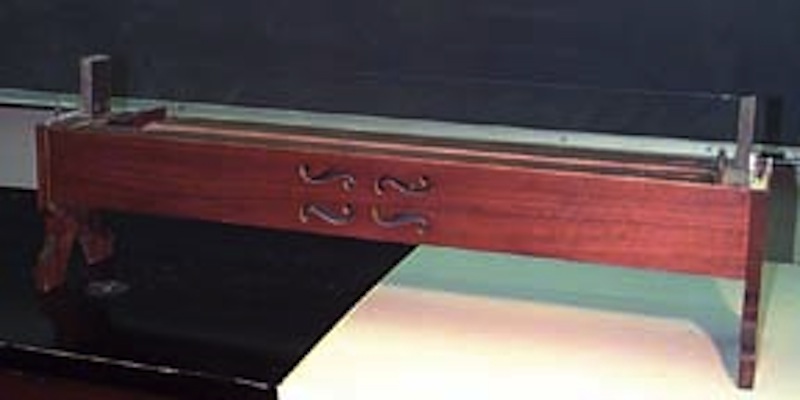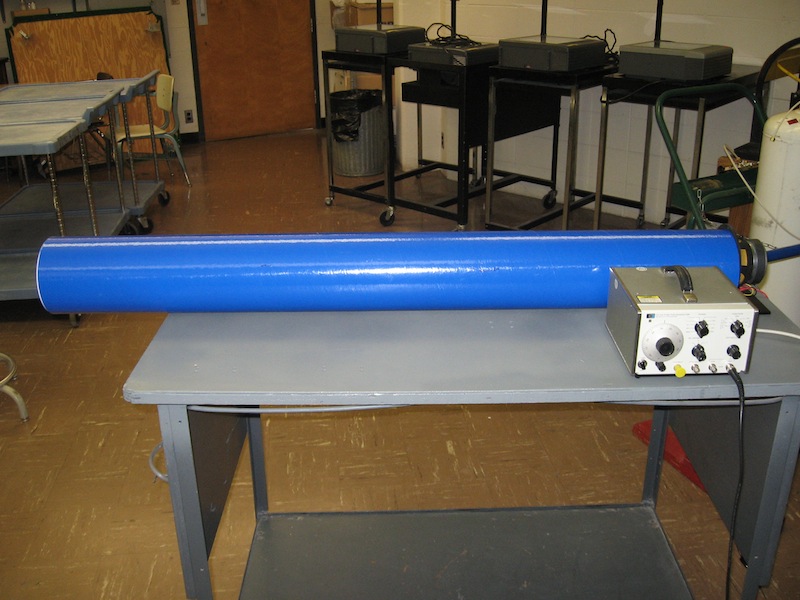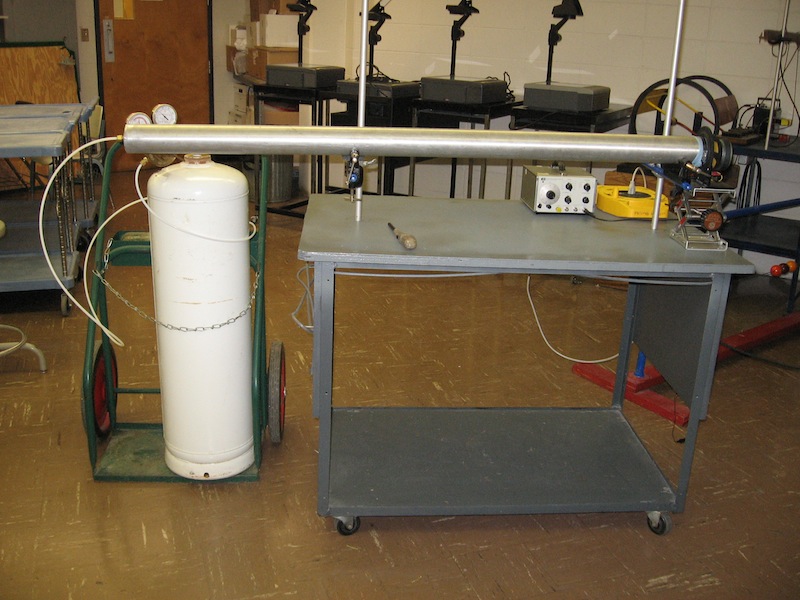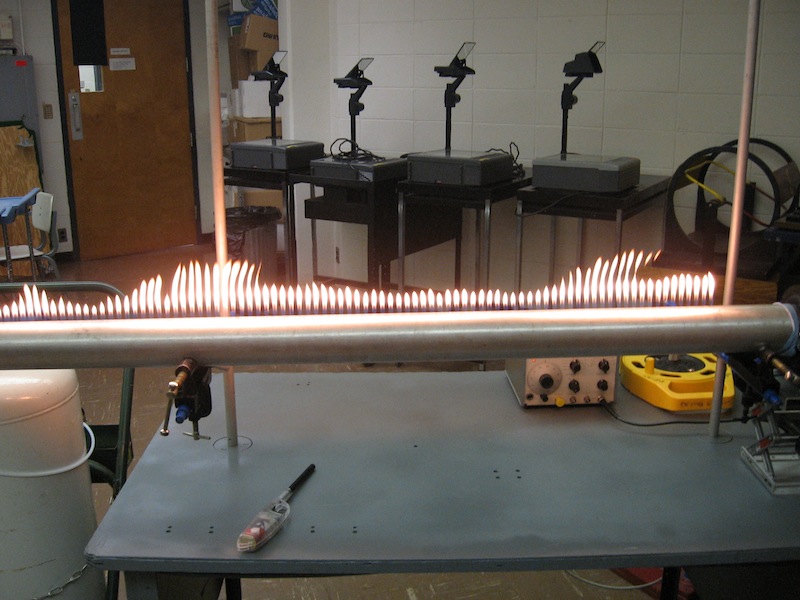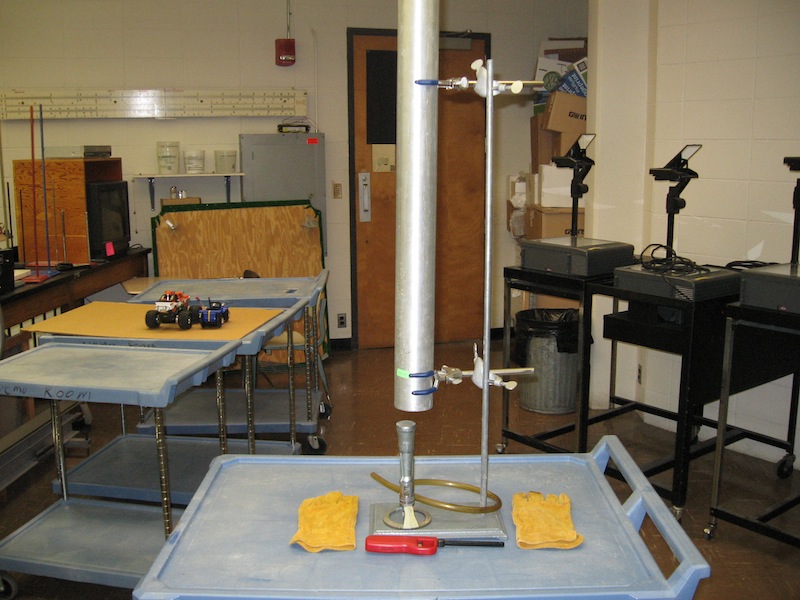INSTRUMENTS (SOUND)
3D20.10 SONOMETER3D30.16 HORIZONTAL RESONANCE TUBE
3D30.50 RUBEN'S FLAME TUBE
3D30.70 HOOT TUBE
|
3D20.10 Sonometer A sounding box with strings and adjustable bridges. Has two wires of different mass/length. Effective length of one can be varied. Tension can be varied.
Setup Requirements: Minimal
Equations: L = n x wavelength / 2. Speed = squareroot of (T/m/L).
Safety Issues:Chair or ladder needed to get off top of cabinet.
|
|
3D30.16 Horizontal Resonance Tube The length of a tube with a speaker on one end is adjusted to achieve resonance to illustrate how length of horn type musical instruments affect pitch of sound produced. Start function generator at 50 Hz. Adjust length of tube and frequency to get loudest sound. Use open end or capped. Setup Requirements: Assembled as needed. Place speaker near one end of tube. Other end may be open or capped. Equations: Nodes and antinodes are 1/2 wavelength apart. Safety Issues: None |
|
3B22.14/3D30.50 Ruben's Flame Tube Instead of using a cord or rope to demonstrate standing waves use the Ruben's Flame Tube. A speaker connected to a function generator is placed next to the piece of rubber on one end of the tube. A propane tank is connected to the other. The tube is filled with propane and the propane coming out the row of holes is lit. The function generator is adjusted to display standing waves in the sound in the tube. The height of the flame will vary with the pressure in the tube. You can use music instead of sine waves but use something with low frequencies. The spacing between nodes/antinodes is limited by spacing of holes along tube. Setup Requirement: Ask at least 1 day in advance. Assembled as needed. You need to practice this demo in stock room before doing in class. Adjust the flow rate to adjust the flame height. Turn off both propane valves and regulator when finished. Propane has an odor. Noticeable delay while tube filling before can be lit. Wrench need to attach hose to tube. A plastic shield may be needed to block air currents and to prevent students from getting too close to flame. Equations: Spacing between nodes or antinodes equals half wavelength. Use this and frequency to estimate speed of sound (v=wf). Safety Issue: Flame, Smoke, Explosions. Turn off both propane valves and regulator when finished. Propane needs to be burned out of tube before turning off function generator. Make sure gas if off before disconnecting. Tube will get hot. Turning the regulator valve clockwise increases the flow rather than shutting off flow. A plastic shield is available to keep students away from flames if used for outreach activities and to block strong air current. EXTRA: For a less spectacular but safer demonstration of sound wave resonance try the horizontal resonance tube on section 3D (Instrument) menu. |
|
3D30.70 Hoot Tube A metal grill is placed about 1/4 the way into a metal tube. This end of the tube is heated over a Bunsen or Meeker burner. Remove the tube from the heat. Convection currents in the tube will cause loud noise. The frequency of the sound will depend on the length of the tube. The sound will stop if the tube is held horizontally. Good for waking up class. Setup Requirements: Assembled as needed. Check if gas available in classroom. If gas not available a propane torch cam be used. Equations: Fundamental resonant frequency determined by length of tube. Safety Issues: Gas, Flame, Hot Tube. Wear gloves when holding hot tube. |

